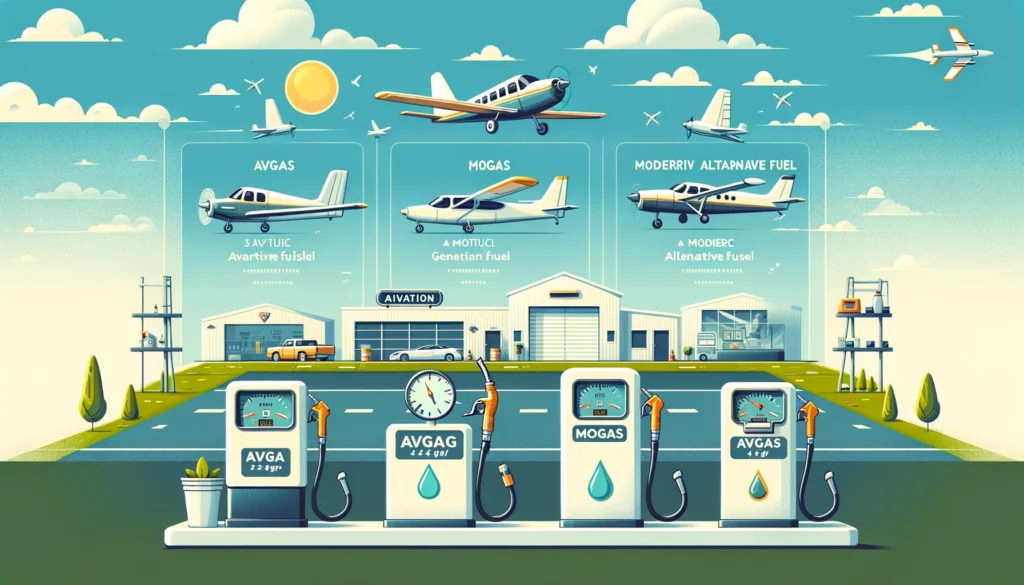
Including AVGAS 100LL, here’s a comprehensive overview of the different types of aviation fuels used in general aviation and ultralight aircraft:
Avgas (Aviation Gasoline):
- 100LL (Low Lead): This is the most commonly used avgas in piston-engine aircraft. Despite being called “Low Lead,” it still contains lead, albeit at a lower concentration than older formulations like 100/130. The lead serves as an octane enhancer and helps prevent engine knocking and valve seat wear. It’s suitable for a wide range of piston aircraft.
- UL91: An unleaded aviation gasoline suitable for aircraft engines that can operate with a minimum octane rating of 91 and do not require leaded fuel. It’s more environmentally friendly due to its unleaded nature. It seems to be priced similarly to AVGAS in France, but it is cheaper than AVGAS in Germany.
- UL94: Another unleaded option, intended for lower-compression engines that traditionally use 100LL. It offers a viable alternative with a 94 octane rating and no lead content. UL94 serves as a good compromise for the world between uncertified engines/fuels and the certified world, especially with the advent of 100UL, which is developed for all aircraft, certified or not.
- 100UL (Unleaded): A newer, high-octane unleaded fuel designed to replace 100LL. It provides the performance benefits of 100LL but without lead, aiming to be safer for the environment and compatible with many piston aircraft engines.
Mogas (Motor Gasoline):
- SP95 and SP98: Standard automotive gasoline types used in Europe, both of which are unleaded (“Sans Plomb”). They are sometimes utilised in aviation and popular with our pilots and plane owners flying at Zouftgen and Sterpenich:
- SP95: Suitable for engines that operate effectively on a lower octane level.
- SP98: Features a higher octane rating for better anti-knock properties, suitable for engines that require higher compression ratios.
- UL AERO SUPER +: This is not an avgas because it lacks certification according to DIN910 or ASTM 7547, only adhering to DIN228. Essentially, it is a better street gas. Based on SP98 automotive gasoline but without ethanol, it meets strict aviation safety and quality standards, being certified, stored, purged, filtered, transported, and distributed accordingly. Although it resembles SP98, UL AERO SUPER + is specifically formulated for aviation use, particularly for modern light aircraft with engines like the ROTAX 912/914 series that are certified for SP98 EN228 fuel. This fuel caters to a niche market segment seeking high-octane mogas without the drawbacks of ethanol. (Only available at two GA airfields in the Paris region)
- When using mogas, three main concerns arise:
- It’s crucial to ensure the fuel does not contain ethanol, as ethanol can be corrosive to aviation fuel systems that are not designed to handle it.
- There is a difference between winter and summer mogas formulations.
- The quality of mogas starts deteriorating after only a couple of weeks, albeit slightly.
Key Considerations for Fuel Use:
- Engine Compatibility: Always verify that the aircraft engine is certified for the type of fuel you’re considering. This ensures safe and efficient operation.
- Environmental Considerations: Opting for unleaded fuels like UL91, UL94, 100UL, and UL AERO SUPER + helps reduce environmental impact due to their lack of lead.
- Operational Safety: Adherence to recommended fuel types is essential for maintaining optimal engine performance and ensuring flight safety.
At Luxembourg Airport, the private pilots have only AVGAS 100LL (and JET A1) at their disposal although their are several planes such as the Technam etc.. who are perfectly allowed to use a more environment friendly AVGAS such as UL91. We have brought this up and will bring this up again to Lux-Airport. Time to move !
By understanding these fuel types and their specific uses, pilots and aircraft operators can make informed decisions that align with engine requirements, regulatory compliance, and environmental considerations. Always consult the aircraft’s operational manuals or manufacturer’s guidance when selecting fuel to ensure both safety and performance.


